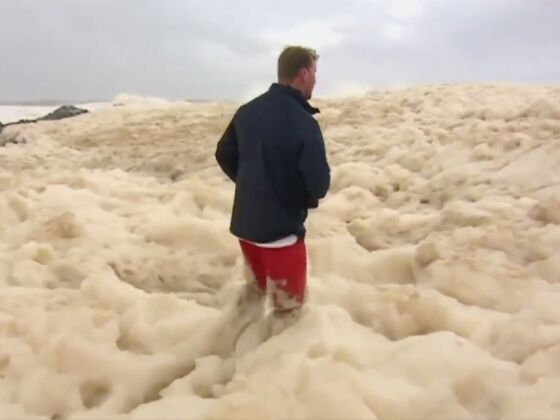It looks like something out of an otherworldly apocalyptic movie, but in reality, it’s just a little sea foam. To be fair, it’s more like an onslaught of sea foam whipped up by intense storms this week that’s covering the beaches of New South Wales and Queensland, Australia. While you might be tempted to flop right into it like diving into fluffy snow, you should probably think twice because sea snakes and other materials are lurking under the soft surface. Yes, you might be jumping into snake infested sea foam.


Eastern Australia Covered Under Huge Amounts of Snake-Infested Sea Foam
Although people are certainly enjoying the foam — both playing in it and taking photos of it — it’s being advised to steer clear due to the presence of sea snakes, which could have gotten swept up in the foam. There are 32 species of poisonous sea snakes around Australia, and their bites require antivenom.
The stormy waters are also bringing large debris to the shore, says Nathan Fife, the Gold Coast lifesaving services supervisor at Surf Lifesaving Australia, to Guardian Australia. “There’s been trees and things like that have washed up. I think there was half a cow that washed up at the beach yesterday, so make sure what’s in front of you — there are trees and logs floating around, so please be careful.”
What is sea foam?
The foam is formed by the churning of seawater with algae, salts, fats, and other pollutants. Recent sea foam in certain parts of Australia is so thick that a dog was even lost (and later found) in the foam at Snapper Rocks on the Gold Coast.
Hazel the dog rescued from sea foam in Byron Bay, Australia. Sea foam often forms when strong winds and large waves whip up the cresting waves. pic.twitter.com/KSmREu2ADs
— BBC Weather (@bbcweather) December 14, 2020
Debris and snake infested sea foam are not the only concern. People are also encouraged to be careful of surges of water under the foam, which aren’t visible but could cause you to fall and be dragged out to sea.